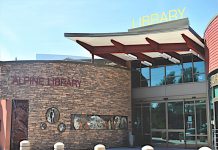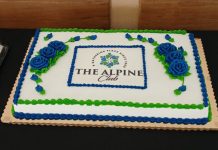By: Lori Bledsoe
The Alpine Sun
Californians have a new inspection to look forward to, the Roadside Inspection Program. It was established by the Bureau of Automotive Repair (BAR) and is assisted by the California Highway Patrol, as witnessed on Alpine Boulevard, last Thursday, February 14. The purpose of the Roadside Inspection Program is to collect data for the State of California, to evaluate and improve the performance of the Smog Check Program.
By: Lori Bledsoe
The Alpine Sun
Californians have a new inspection to look forward to, the Roadside Inspection Program. It was established by the Bureau of Automotive Repair (BAR) and is assisted by the California Highway Patrol, as witnessed on Alpine Boulevard, last Thursday, February 14. The purpose of the Roadside Inspection Program is to collect data for the State of California, to evaluate and improve the performance of the Smog Check Program.
The surveys are performed in all the heaviest trafficked areas in California, with the poorest air quality such as San Francisco, Los Angeles, and here in San Diego County. The BAR randomly selects an area to inspect and sets up a checkpoint much like the one that was on Alpine Boulevard near Alpine Elementary School across from the Alpine Taco Shop.
Staff from the BAR, which usually consists of four ASE certified automotive technicians, executes the surveys. During these surveys, it is possible for the technicians to provide vehicles owners with information regarding their vehicles. If they find any problems, it could be an early alert of impending repairs.
The vehicles selected to be evaluated, are vehicles that are older than the year 2000. The check is similar to a regular smog check and the participants in the survey are completely voluntary. The owners of the vehicles suffer no consequence in the check; it is purely a data gathering exercise.
Many in Alpine, were concerned about the smog check, or roadside inspection program. The purpose behind this exercise is to understand how effective the actual smog checks are on vehicles older than 2000. The findings so far have provided information indicating that high emitting vehicles that should not pass, may be passing through the check process, or if they pass the requirement, they revert or become smog producers in as little as six months after passing a check.
In essence the survey is focusing on legitimate ways a vehicle can pass the inspection when it should have failed it, opinions on ‘gaming’ the test process, (playing with the outcome of a test until the test is passed), The roles of repairs in the high re-fail rate during roadside inspections, how motorists could be responsible, and opinions on how Smog Checks could be improved.
So far, the summary of Smog Check Focus Group study includes the findings that often times, when a consumer must repair their vehicle to pass smog, cheap, inexpensive catalysts are common and cause only temporary repairs. This is one of the most common recorded reasons for a vehicle to be a repeat smog offender. The time of day also influence vehicle emissions. So the results can be skewed and there is a suggestion that temperature correction factors be incorporated.
More findings suggest that a ‘fast pass feature’ encourages technicians to skip the visual and functional portions of the inspection, so when a vehicle ‘fast-passes the emissions portion of the inspection, the technician knows there will be little suspicion aroused if the vehicle passes the visual and functional portions of the inspection as well. Therefore after the ‘fast-pass’ technicians often feel safe skipping the visual and functional portions by entering a pas or ‘not-applicable’ response when prompted by the analyzer software.
So, the Smog Check is no longer just an every other year annoyance that Californians must submit to and pay for. There is always a possibility that even after passing a Smog Check, one may be asked to submit to a voluntary Roadside Inspection Program. This vehicle inspection does not take place of the vehicles official Smog Check.
There is no incentive to participate, and one does not earn any certificate if they participate. You may however aquire a vehcle inspeciton report tetailing the results of the test.
The test is supposed to only take ten minutes. This is purely to gauge whether or not the Smog Inspection Stations are actually doing their jobs, and how the State of California can further crack down on the smog issue in the area.












